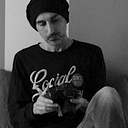‘One day with a tattoo artist’: my first short documentary
THE IDEA
Sometimes you have to stop and do something for yourself. To me it means creating something just for the pleasure of filming, editing and, of course, telling a story.
I always loved short documentaries, especially some works of Philip Bloom and I’m always looking for new mini docs to watch. Unfortunately this genre is not so huge in Italy (the place where I live right now) and I haven’t so many chances to work on a short documentary so I decided to produce one by myself and I started to look for an interesting story to tell.
Last christmas I heard about Simona Ercole, a tattoo artist based in Apulia (South Italy) and, after I collected some informations about her, I realized that she could be the right subject for my first mini doc.
In May I come back to Apulia due to my job so I decided to contact her to ask for her availability to be filmed and interviewed by me; she was enthusiast and after a meeting to talk about the project we chose a day to shoot.
CAMERAS AND LENSES
I did most of the footage with my beloved Panasonic GH4 using a modified Cinestyle D picture profile (as suggested by Noam Kroll) and mounting a couple of lenses: Voigtlander 25mm f0.95 (50mm in full frame size) and Olympus Zuiko 12mm f2.0 (24mm as a full frame) while as B-Camera I used a Panasonic LX100 with a modified Standard picture style.
GH4 is a fantastic camera because of her great ergonomics and awesome images, especially combined with Voigtlander lens; I don’t know if the Panasonic baby will became the most beloved camera by independent filmmakers but I’m sure it’s a trusty alternative to Canon 5D.
LX100 is a surprising camera: at first I was considering Panasonic GH3 or Blackmagic Pocket Cinema Camera as a B-Camera but when I discovered this little gem from Panasonic I had no doubt about which camera buy. It has a great compatibility with GH4, not to mention its manageability which make this camera ideal for street or travel filmmaking.


OTHER GEAR
‘One day with a tattoo artist’ is a no budget indie production so I didn’t use expensive gear, only a couple of Manfrotto tripods, a Kollerton slider for tracking shots and a cage for some handheld images. I recorded master audio with a Zoom H2n while as a reference/alternative audio I used a Rode Videomic Pro mounted on the GH4 and the internal LX100 microphone.
I shot at 25fps (the photo below was shot before I set up recording parameters) unless some b-roll shots at 50fps, just to have a fluid slow motion if needed.

POST PRODUCTION
I edited the entire work with Final Cut Pro X, my first choice as NLE software (I can also work with Premiere if necessary). One of the most powerful FCPX feature is the chance to create smart collections right from the tags you can put on footage while you’re reviewing it: it really speeds up your work because your clips are organized just with one click and you can easily find the images you’re looking for while editing; another FCPX tool I really love is the magnetic timeline: an absolute standard for me and a big help if you want to edit faster.
I worked at first on the interview just to select the most interesting sentences and then I started building the storytelling in a separate timeline. What I learned working on this personal project is that a documentary won’t be exactly like you’ve imagined in your mind because the answers of the person you are interviewing are unpredictable and this influences, for example, the choice of b-roll, so shoot all the coverage you can: it’s never enough!


After editing I started color grading. My first choice was a film look inspired by Cohen’s brothers ‘Inside Llewyn Davis‘, but I wasn’t totally satisfied though the result was good, but not as good as the black and white grading I decided to adopt. I did most of the grading with DaVinci Resolve lite and I refined it with the awesome Filmconvert, a powerful plugin which emulates film stock and helped me to make footage color more natural.

FINAL THOUGHTS
Short documentary is definitely my favorite genre because gives me the chance to tell a story that is not so complex to be displayed in a sixty or ninety minutes documentary but it’s in any case worth telling. Not to mention the versatility of this genre: think about the contamination with brand film or fashion film.
